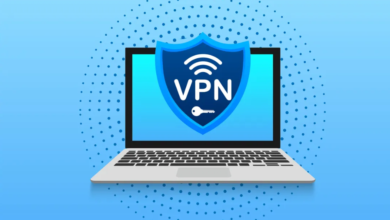
Protecting Your Bank and Mobile Money Details from Fraudsters
In today’s digital age, financial transactions are increasingly conducted online, making it essential to safeguard your bank and mobile money details. Fraudsters are becoming more sophisticated, employing various techniques to steal your information and money. This blog post will guide you through the best practices to protect your bank and mobile money details from fraudsters.
Understanding Common Fraud Techniques
Before diving into protective measures, it’s crucial to understand common fraud techniques:
- Phishing: Fraudsters send emails or text messages posing as your bank or mobile money provider to trick you into providing personal information.
- SMiShing: Similar to phishing, but conducted via SMS.
- Vishing: Fraudsters call you pretending to be from your bank, asking for your account details.
- Card Skimming: Devices are attached to ATMs or point-of-sale terminals to steal card information.
- Malware: Malicious software can be installed on your device to capture sensitive information.
Best Practices to Protect Your Bank and Mobile Money Details
1. Use Strong, Unique Passwords
- Create Strong Passwords: Use a mix of upper and lower case letters, numbers, and special characters. Avoid common words or easily guessable information like birthdays.
- Unique Passwords for Different Accounts: Never use the same password across multiple sites. Consider using a password manager to keep track of different passwords.
2. Enable Two-Factor Authentication (2FA)
- Add an Extra Layer of Security: 2FA requires you to verify your identity using two different methods, such as a password and a code sent to your phone. Enable 2FA on all your financial accounts.
3. Be Cautious with Emails and Text Messages
- Verify the Sender: Check the email address or phone number of the sender. Legitimate messages from banks usually come from official addresses.
- Do Not Click on Suspicious Links: Avoid clicking on links or downloading attachments from unknown or unsolicited messages. Hover over links to see where they lead before clicking.
4. Monitor Your Accounts Regularly
- Check Statements Frequently: Review your bank and mobile money statements regularly for any unauthorized transactions.
- Set Up Alerts: Most banks and mobile money providers offer alert services for transactions. Enable these alerts to receive instant notifications of account activity.
Also Check
5. Secure Your Devices
- Install Security Software: Use reliable antivirus and anti-malware software on your devices.
- Keep Your Software Updated: Regularly update your operating system and apps to protect against vulnerabilities.
- Use Secure Networks: Avoid conducting financial transactions over public Wi-Fi. Use a virtual private network (VPN) if necessary.
6. Protect Your Physical Cards
- Keep Cards Safe: Store your cards in a secure place and never share your PIN with anyone.
- Be Wary of Skimming Devices: Inspect ATMs and point-of-sale terminals for any unusual attachments before using your card.
7. Educate Yourself and Stay Informed
- Stay Updated on Scams: Follow news about the latest fraud techniques and scams. Being informed helps you recognize potential threats.
- Attend Security Workshops: Some banks offer workshops on how to protect yourself from fraud. Attend these sessions to learn more.
8. Use Biometric Authentication
- Fingerprint or Face Recognition: Use biometric authentication where available, as it provides an added layer of security compared to passwords alone.
9. Limit Information Sharing
- Be Discreet Online: Avoid sharing too much personal information on social media that could be used to guess your security questions or passwords.
- Question Requests for Information: Legitimate companies will never ask for sensitive information through unsolicited emails or messages.
10. Report Suspicious Activity Immediately
- Contact Your Bank: If you suspect any fraudulent activity, contact your bank or mobile money provider immediately to report it and take necessary actions.
- File a Police Report: In cases of significant fraud, file a police report to have an official record of the incident.
Conclusion
Protecting your bank and mobile money details requires vigilance and proactive measures. By understanding the tactics used by fraudsters and implementing the best practices outlined in this guide, you can significantly reduce the risk of falling victim to financial fraud. Stay informed, stay cautious, and ensure your financial information remains secure.
Remember, your vigilance is your best defense against fraud. Always be cautious, and don’t hesitate to report any suspicious activity to your bank or mobile money provider. Your financial security is paramount, and taking these steps will help keep your hard-earned money safe.








